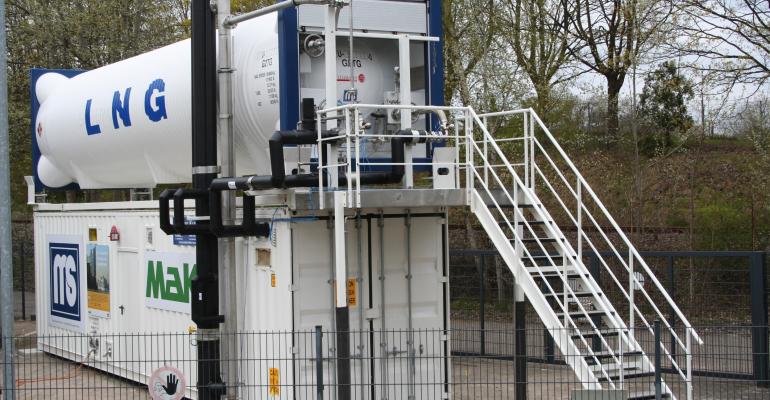The LNG preparation unit comprises of an LNG tank and a gas preparation unit, in 40ft container size, both developed and provided by Hamburg-based Marine Service GmbH, a marine LNG consultant.
Caterpillar already boasts its MaK branded dual fuel engines, which are capable of running on MDO or NG (natural gas), 'but there’s still a lot to learn about LNG and the engineering required to maximize its potential', according to the engine manufacturer.
With its Kiel location, Caterpillar will improve its understanding of the technology and enhance the service it provides to clients adopting LNG.
'LNG offers obvious benefits to marine power and it’s considered a true future fuel,' said Georg Gillert, engineering supervisor for Caterpillar Marine.
'It burns cleaner than other fuels, emitting low amounts of nitrogen oxide (NOx), sulfur oxides (SOx), particulate matter and carbon dioxide.
'When handled properly, LNG offers a clear path to regulation compliance with all current and future standards,' stated Gillert.
LNG also provides greater energy density than natural gas in its gaseous form, and it’s possible to store up to 600 times more LNG than standard natural gas.
Several shipping companies, including cruise lines and chemical/oil tanker operators, have begun fitting their fleets with MaK power, and gas-fuelled engine prevalence will only increase over time believes Caterpillar.
The first four gas-powered cruise ships for AIDA and Costa will have MaK 16 M 46 DF engines built by Caterpillar.
'Caterpillar’s LNG test bed in Kiel is a milestone in LNG development,' said Gillert. 'While LNG is a promising fuel, it does offer unique challenges,' he remarked.
LNG has to be kept at extremely low temperatures to prevent it from vaporizing, and this requires additional gas handling components not found in other power systems.
'New engine and gas handling architecture is needed to take full advantage of LNG’s emissions benefits,' he noted.
'Customized monitoring and control processes will also be needed to optimize fuel/air composition and safe engine operation.'
Caterpillar’s Kiel test bed will focus on familiarizing Caterpillar personnel with LNG capabilities; demonstrating LNG benefits to Caterpillar’s clients; providing valuable information regarding the technology and ready field personnel for the challenges LNG poses.
It will also facilitate customer training to not only become familiar with LNG, but also teach customers important safety information regarding LNG handling and operational procedures.
Copyright © 2024. All rights reserved. Seatrade, a trading name of Informa Markets (UK) Limited. Add Seatrade Cruise News to your Google News feed.


